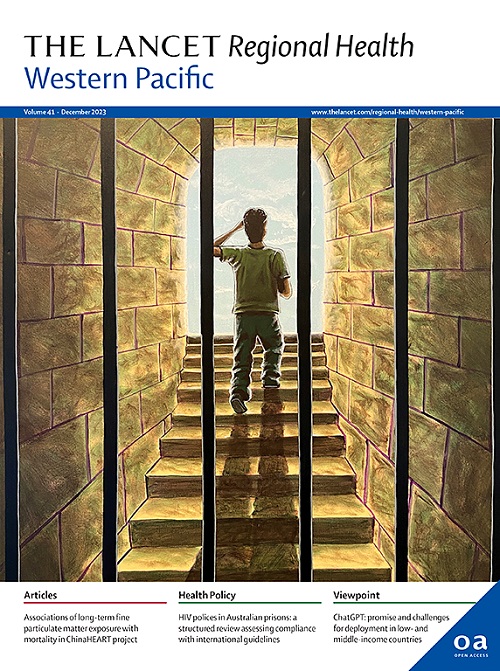Cost-effectiveness of population-based screening for chronic kidney disease among the general population and adults with diabetes in China: a modelling study
IF 7.6
1区 医学
Q1 HEALTH CARE SCIENCES & SERVICES
引用次数: 0
Abstract
Background
Despite the majority of patients with chronic kidney disease (CKD) live in low- and middle-income countries, most evidence on screening strategies is derived from high-income countries, where the contexts differ significantly. This study aims to assess the cost-effectiveness of population-based CKD screening strategies in both the general population and adults with diabetes in China.
Methods
A validated microsimulation model of CKD was developed to evaluate the costs and health consequences of population-based CKD screening strategies from a societal perspective. A cohort of the population aged 45 years in China was simulated over their lifetime. Model parameters were estimated based on the existing literature and various data sources in China. Main outcomes included the averted number of cases with cardiovascular disease (CVD) and kidney failure with replacement therapy (KFRT) under the population-based screening strategy compared with usual care, and the incremental cost-effectiveness ratios (ICERs). CKD screening with different frequencies and for different age groups in both the general population and adults with diabetes were considered. One-way sensitivity analyses were performed to assess the robustness of the results.
Findings
The ICER of annual screening starting at 45 years of age was $10,588 per quality-adjusted life year (QALY) for the general population and $9184 per QALY for adults with diabetes. Other screening strategies were also cost-effective compared to usual care, with ICERs less than three times the per-capita gross domestic product of China ($35,501). The most prominent absolute decrease in lifetime incidence of KFRT and CVD were also observed with the annual screening strategy in both the general population and in adults with diabetes. Specifically, the decreases were 1.88 and 8.55 per 1000 individuals for KFRT, and 35.07 and 19.92 per 1000 individuals for CVD, respectively.
Interpretation
CKD screening in both the general population and adults with diabetes is cost-effective and could avert substantial numbers of KFRT and CVD cases in China.
Funding
This study was supported by grants from National Natural Science Foundation of China (72125009), National Key Research and Development Program of China (2022YFF1203001), National High Level Hospital Clinical Research Funding (State Key Laboratory of Vascular Homeostasis and Remodeling, Peking University, 24QZ007), Peking University Medicine Sailing Program for Young Scholars’ Scientific & Technological Innovation (BMU2023YFJHMX014), Young Elite Scientists Sponsorship Program by CAST (2022QNRC001), and CAMS Innovation Fund for Medical Sciences (2019-I2M-5–046).
中国普通人群和成人糖尿病患者慢性肾脏疾病基于人群筛查的成本效益:一项模型研究
尽管大多数慢性肾脏疾病(CKD)患者生活在低收入和中等收入国家,但大多数关于筛查策略的证据来自高收入国家,这些国家的情况差异很大。本研究旨在评估基于人群的CKD筛查策略在中国普通人群和成人糖尿病患者中的成本效益。方法建立CKD微观模拟模型,从社会角度评估基于人群的CKD筛查策略的成本和健康后果。对中国45岁人群的一生进行了模拟。模型参数的估算基于现有文献和中国的各种数据源。主要结果包括在基于人群的筛查策略下,与常规治疗相比,替代治疗(KFRT)避免的心血管疾病(CVD)和肾衰竭病例数,以及增量成本-效果比(ICERs)。在一般人群和成人糖尿病患者中考虑不同频率和不同年龄组的CKD筛查。进行单向敏感性分析以评估结果的稳健性。从45岁开始的年度筛查,一般人群的ICER为每质量调整生命年(QALY) 10,588美元,糖尿病成人的ICER为每质量调整生命年9184美元。与常规护理相比,其他筛查策略也具有成本效益,ICERs不到中国人均国内生产总值(35,501美元)的三倍。在普通人群和成人糖尿病患者中,年度筛查策略也观察到KFRT和CVD终生发病率的绝对下降最为显著。具体来说,KFRT和CVD分别减少了1.88和8.55 / 1000,35.07和19.92 / 1000。在中国,在普通人群和成人糖尿病患者中进行ckd筛查具有成本效益,可以避免大量KFRT和CVD病例。基金资助:国家自然科学基金项目(72125009)、国家重点研发计划项目(2022YFF1203001)、国家高水平医院临床研究基金项目(北京大学血管稳态与重构国家重点实验室,24QZ007)、北京大学医学青年科研航行计划;科技创新项目(BMU2023YFJHMX014)、中国科协青年科技精英资助项目(2022QNRC001)、中国科学院医学科学创新基金项目(2019- im2 -5 - 046)。
本文章由计算机程序翻译,如有差异,请以英文原文为准。
求助全文
约1分钟内获得全文
求助全文
来源期刊

The Lancet Regional Health: Western Pacific
Medicine-Pediatrics, Perinatology and Child Health
CiteScore
8.80
自引率
2.80%
发文量
305
审稿时长
11 weeks
期刊介绍:
The Lancet Regional Health – Western Pacific, a gold open access journal, is an integral part of The Lancet's global initiative advocating for healthcare quality and access worldwide. It aims to advance clinical practice and health policy in the Western Pacific region, contributing to enhanced health outcomes. The journal publishes high-quality original research shedding light on clinical practice and health policy in the region. It also includes reviews, commentaries, and opinion pieces covering diverse regional health topics, such as infectious diseases, non-communicable diseases, child and adolescent health, maternal and reproductive health, aging health, mental health, the health workforce and systems, and health policy.
 求助内容:
求助内容: 应助结果提醒方式:
应助结果提醒方式:


